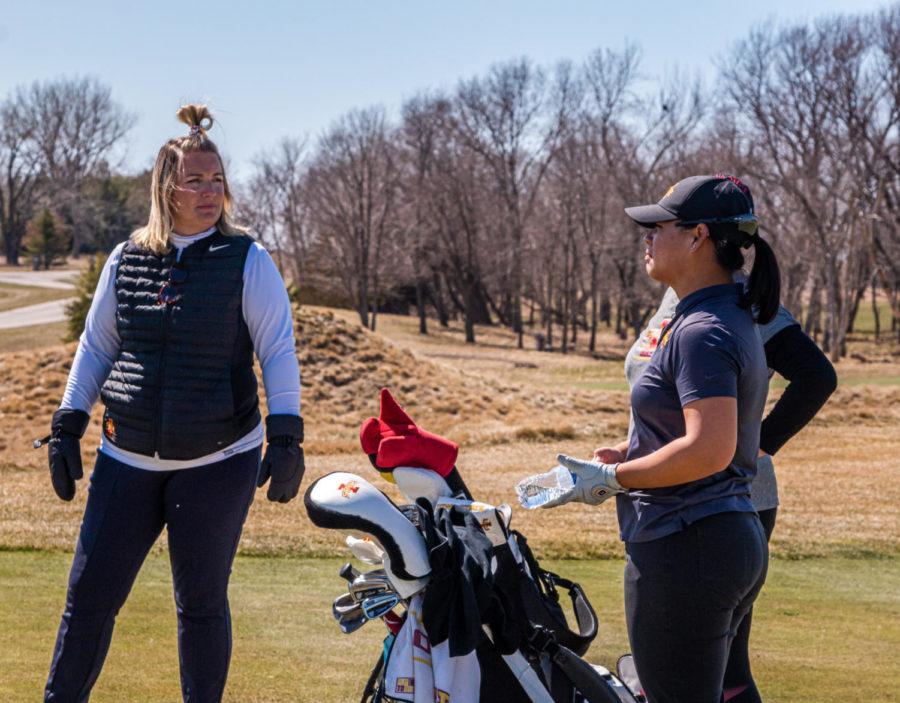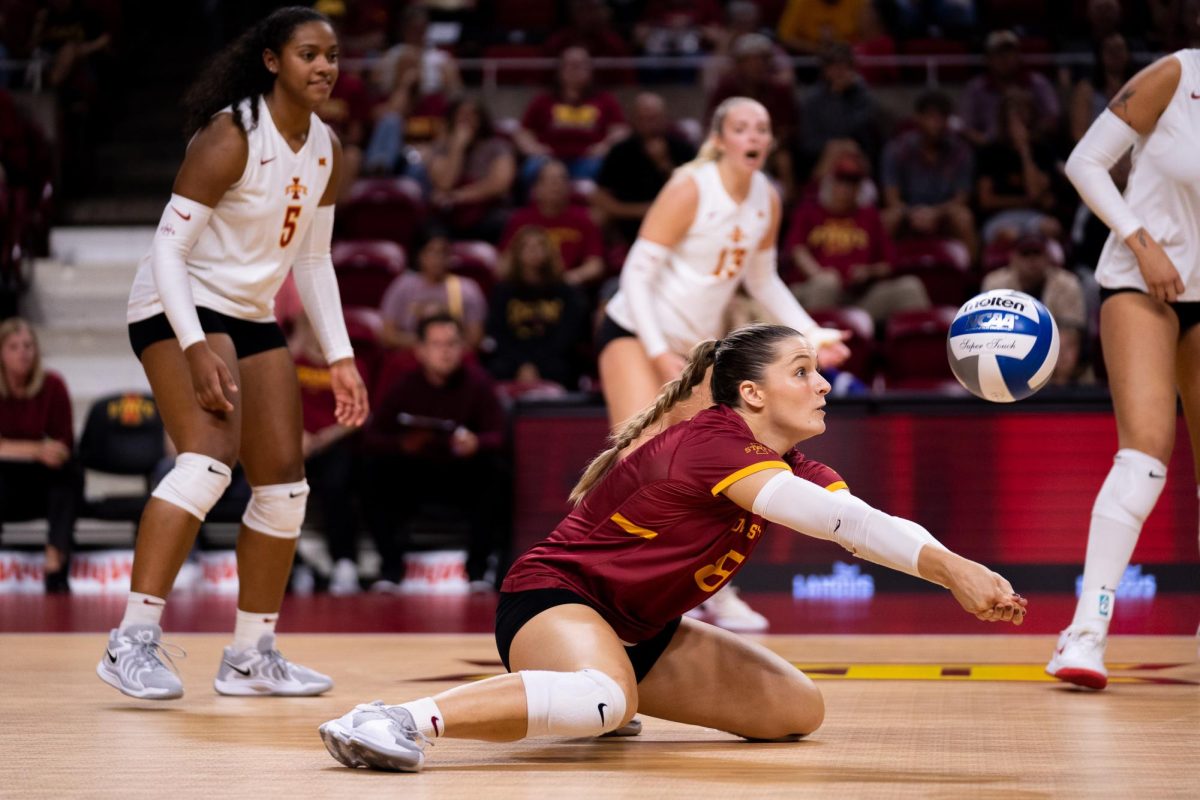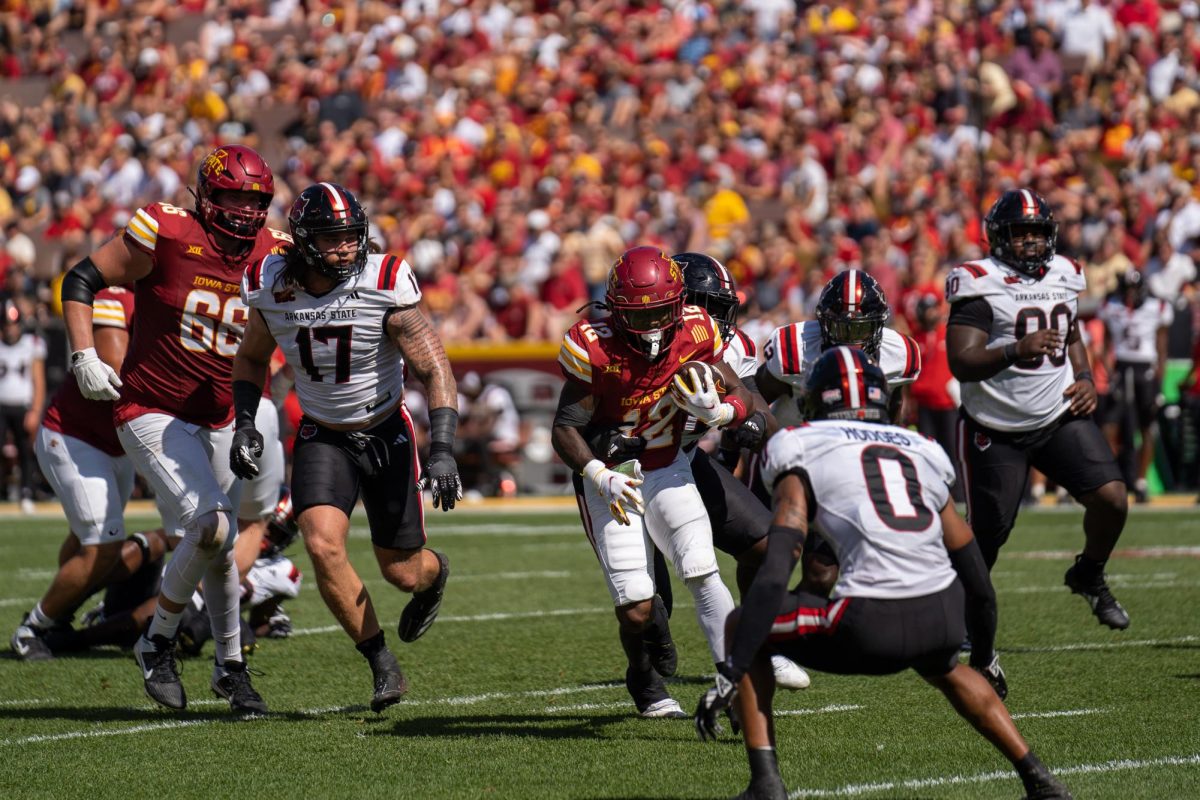Fairbanks shares his love with ISU students
January 19, 1999
Editor’s Note: Daily reporter Jamie Lange will be interviewing an Iowa State faculty or staff member on a weekly basis. If there is a professor or staff person that is extraordinary in your opinion, send an e-mail message with the teacher or staff member’s name and a compelling reason for him/her to be featured to [email protected].
Native American culture permeates the office of Devery Fairbanks, temporary instructor of American Indian studies.
From the Native American newspapers strewn about to the artifacts sprinkled atop of his desk, Fairbanks offers a unique display of Native American culture and heritage.
“I lived in a lot of states, always around Native Americans,” he said. “I grew up around Native American people all my life until I got to Iowa, but I like the people here.”
Originally from Minnesota, Fairbanks traveled to Iowa from Arizona in 1997 to begin teaching at Iowa State. Fairbanks recalled being lonesome when he first came to ISU and remembered wanting to quit to return to the Native American community.
“Someone pointed out to me that I am supposed to be here. The creator put me here for a reason, and judging from the success I have had at Iowa State, by teaching non-Native American students, I am supposed to be here,” he said.
Students in Fairbanks’ classes are exposed to a realistic view of the history and current issues in relation to the Native American community. Fairbanks said he strives to disintegrate the stereotypical misconceptions of Native Americans.
“Mr. Fairbanks’ 210 [Introduction to American Indian Studies] class provided background for all of the movements and injustices that involve Native Americans,” said Sara Horton, senior in anthropology.
Fairbanks said he believes that students walk away from his class with an accurate understanding of history told from a different perspective. He said most public schools teach students “feel good history.”
“They learned that Columbus landed and that there were a few scattered tribes of Indians. They don’t teach the students that Columbus began a legacy that murdered people who were there,” Fairbanks said.
He said college students are more receptive to this class because they are more in tune with the times.
“Because American Indian studies is such a difficult discipline to teach, college students are better than high school students because they are more sophisticated, open-minded and mature and understanding,” he said.
Fairbanks said students often comment that they had little understanding of the history of Native Americans before they enrolled in his class.
“A lot of information through prior education was discarded and the truth came out [in Fairbanks’ class]. My views have changed because now I am educated about Native Americans,” said Carolyn Spalla, senior in agricultural education.
Fairbanks takes pride in his teaching methods and strategies. He said he hopes the manner in which he presents material will positively change students’ perspectives for the remainder of their lives.
“Students appreciate the class because they learn so much that they can take on to their families,” he said. “They say they will teach their children not to be closed-minded, not to have prejudice against anyone just because their parents and grandparents said they should.”
Just as he hoped they would, many of his students have taken to heart the immediacy of his message.
“[Fairbanks] is an excellent professor. He puts a lot of heart in what he does,” Horton said. “He mainly tries to send a clear message.”
One way Fairbanks tries to make the message more apparent to students is by incorporating field trips into class study.
“I take the students on field trips to get them out of their comfort zone and into areas and situations where they’ve never been. I think they must experience that,” he said.
He said he once took 10 of his students to a gymnasium at the Pine Ridge Reservation with 300 to 500 Native Americans.
“The two blonde girls in the group felt that every eye in the place was looking at them,” Fairbanks said. “It was good for them to know what it felt like to be on the other side — to be the minority.”
Fairbanks said he believes that placing students outside their realms of familiarity is an essential supplement to classroom instruction because most students raised in the Midwest haven’t lived in close contact with minorities.
“By the time we go on trips, students are knowledgeable on the issues of American Indians, so those who have not been exposed to minorities do OK,” Fairbanks said.
Fairbanks said he wants his class to leave an indelible mark on his students, hoping they see it as something more substantial than just fulfilling a requirement.
“Students are grateful to have this class satisfy the [diversity] requirement, but in the end they realize that it was much more than that. They gain something they can take with them for the rest of their life,” he said.
Devery Fairbanks
Degrees: received bachelor’s degree in American Indian studies in 1988 from the University of Minnesota, received a master’s degree in American Indian studies in 1997 from the University of Arizona
Started at ISU: Fall 1997
Courses taught at ISU: Introduction to American Indian studies, Topics of American Indian studies, Independent Study in American Indian studies
Residence: lives in Ames with daughter Sandra, 14, and dog, Fozzie
Long-term Goal: to go back and work with Native American students






